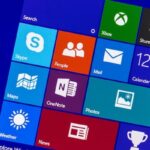We explain what software is, types and examples. Also, what is hardware and the characteristics of free software.

What is software?
The term software It is an English word that was taken over by other languages and designates any intangible (and non-physical) component that is part of devices such as computers, mobile phones or tablets and that allows their operation.
The software It is made up of a set of applications and programs designed to fulfill various functions within a system. Furthermore, it is made up of user information and processed data.
The programs that are part of the software tell the hardware (physical part of a device), through instructions, the steps to follow.
- See also: What is an application?
Types of software

Software is classified according to its function as:
- System software. Programs that give the user the ability to interact with the system, to exercise control over the hardware. The system software is also offered as support for other programs. For example: operating systems or servers.
- Programming software. Programs designed as tools that allow a programmer to develop computer programs. They use techniques and a specific programming language. For example: compilers or multimedia editors.
- Application software. Programs designed to perform one or more specific tasks at a time, may be automatic or assisted. For example: video games or multimedia players.
Software Examples
There are many examples of software, which are classified according to their function as:
- Image editing software. For example: Adobe Photoshop, Paintshop, GIMP.
- word processing software. For example: Microsoft Word, Word Pad, Notepad.
- audio software. For example: Adobe Audition, Abelton, Pro Tools.
- Communication software. For example: Facebook, Skype, Zoom.
- Design and architecture software. For example: AutoCAD, Adobe Illustrator, Revit.
- accounting software. For example: Loggro, Xero, Nubox.
- operating system software. For example: Linus, MacOS, Windows.
- Virus protection software. For example: AVG Antivirus, McAfee, Panda.
- Programming software. For example: Microsoft Visual Studio, Xcode, Lazarus.
Software and hardware
Every device is made up of both the intangible part, the software, and the tangible part, the hardware. Hardware is the set of material elements that make up an electronic device. For example: in the case of a computer, the hardware consists of the monitor, keyboard, mouse, among others.
Both software and hardware are key pieces for the correct execution of a computer or mobile device. Users would not be able to run software without the presence of hardware and, in turn, hardware is useless without software. Both are opposite but complementary, so they work together.
Each device is made up of different pieces of hardware that can be electronic, electrical or mechanical and that fulfill a specific function. For example: a storage memory or a video card.
There is the main hardware, essential for the correct functioning of the device, and complementary hardware, made up of accessories with specific functionalities.
- Hardware and software
free software
Free software is a software in which users can access its source code to study, copy or modify it.
The term and the ideas that free software encompasses were introduced in 1984 by the American programmer Richard Matthew Stallman, who created the Free Software Foundation in order to extend this type of software and rescue the idea of user freedom.
Software is considered free when:
- It can be used for any purpose.
- You can study it, learn how it works and modify it if you believe it is necessary.
- Copies may be distributed.
- It can be improved by any user.
The idea of free software tends to be confused with free, but it is important to keep in mind that Not all free software is free, just as not all free software is free.
Nor should the concept of free software be confused with open source, since the latter does not always guarantee the four conditions.
Any software that does not guarantee the four freedoms is considered non-free. In these cases, it is usually the creators or license owners who modify and regulate the distribution of the software.
Examples of free software are the GNU operating system or the Open Office word processor.
References
- “What is free software?” at the Free Software Foundation.
- “Software” in Britannica.
- “What is software?” in Techopedia.
- “Application software” in Quick Base.





